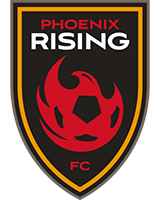General Rules
- Teams are composed of four outfield players and one goalkeeper.
- There are no throw-ins in futsal. A kick-in will be used to restart play.
- There are no offsides in futsal.
- Teams play 20 minute halves and are entitled to a one minute timeout in each half. 5 minute halftime break. Timeouts are allowed when the team is in possession and the ball is out of play.
- There are no goal kicks in futsal. Goalkeepers restart play by distributing the ball with their hands.
- Substitutions may occur any time during the run of play. Substitutions must be made through the technical area in front of the team’s bench, not at half court.
- Direct free-kick fouls are accumulated in each half. If one team accumulates 6 or more direct free-kick fouls in one half, the opposing team will be awarded a direct free-kick.
Substitutions
All substitutions are on the fly, this includes goalkeeping substitutions. Referees will not stop play for goalkeeping substitutions. A substitute may not enter the pitch until the player leaving the pitch leaves through the substitution zone in front of his teams’ bench. Any substitute who enters the pitch before the player being replaced has completely left the field of play may be shown a yellow card. All substitutions must take place through the substitution zone in front of his teams’ bench — not at the half-way line.
Restarts
Kick-offs: A goal may be scored directly against the opponent from the kick-off. The ball is in play when it is kicked and clearly moves.
Kick-ins: are indirect. The ball must be placed on the line and the kick must be taken within 4 seconds. A kick-in that goes directly in the opposing goal is a goal clearance for the opposing team. A kick-in that goes directly in the defensive goal is a corner kick of the opposing team. If the kick-in does not enter the pitch or if the kick is not taken within 4 seconds, the ball is turned over to the opponent.
Goal Clearances: are awarded when the ball exits the court beyond the end-line. The ball is thrown or released from any point within the penalty area by the goalkeeper of the defending team. The ball must be released within 4 seconds (either at referee signal or as goalkeeper is ready). Opponents must be outside the penalty area until the ball is in play.
Corner Kicks: are direct. The ball must be placed in the corner arc area and the kick must be taken within 4 seconds. If the kick is not taken within 4 seconds the restart becomes a goal clearance for the opposing team.
Free Kicks: may be indirect or direct. The ball must be stationary before the kick may be taken.
Penalty Kicks: are taken from the penalty spot and must be taken by a clearly identified kicker. Defenders may not be nearer to the ball than 16 feet and even or behind the ball when the kick is taken.
Fouls and Misconduct
Indirect Free Kicks: When a player plays in a dangerous manner, impedes an opponent, prevents the goalkeeper from releasing the ball with her hands, goalkeeper takes more than 4 seconds to release the ball when in possession in his own half, plays the ball again within his own half after releasing the ball and the ball doesn’t touch an opponent or has gone out of play, or commits any offense for which play is stopped to caution or eject a player, an indirect free kick is awarded.
Direct Free Kicks: When a player kicks an opponent, tackles an opponent, trips an opponent, jumps at an opponent, charges an opponent, strikes an opponent, pushes an opponent, holds an opponent, spits at an opponent or handles the ball deliberately, a direct free kick is awarded.
Yellow Card / Caution: The offending player is shown a yellow card. If a player is shown two yellow cards in a match, he is shown a red card.
Red Card / Send-off: The offending team plays with one less player for two full game minutes or unless scored upon before the two-minute penalty expires. The offending player serves a minimum one-match suspension.
Accumulated Fouls: All direct free kick fouls are recorded on the scoresheet and on the scoreboard. If one team accumulates 6 or more direct free kick fouls in one half, the opposing team will take a direct free kick without a wall. If the foul occurs farther from the attacking goal than the second penalty spot, the Direct Free Kick Without a Wall is taken from the second penalty spot. If the foul occurs nearer to the attacking goal than the second penalty spot (but outside the penalty area, of course), the attacking team may choose whether to take the Direct Free Kick Without a Wall from the second penalty spot or from the spot of the foul. All Direct Free Kicks Without a Wall must be kicked with the intention of scoring a goal by a clearly identified kicker. The defending team may not make a wall and may not be nearer to the ball than 16 feet and even or behind the ball when the kick is taken. The goalkeeper may be off the goal-line but may not be nearer than 16 feet from the ball. Accumulated fouls are reset to zero at the beginning of the second half and carry over into extra-time if being played.
Penalty Spot: 5 meters (~16 feet) from goal-line and the center of the goal and placed at the top of the penalty area line.
Second Penalty Spot: 10 meters (~32 feet) from goal-line and the center of the goal.
Advantage: Advantage is applied in Futsal. Direct free kick foul will count as accumulated fouls if advantage is applied even if play is not stopped by the referees. If the referee gestures with both arms, the foul was a direct free kick foul and will be counted accordingly. If the gesture is with one arm, the free kick would have been indirect and will not count as an accumulated foul.
The Goalkeeper
- Must wear a different color shirt.
- He/She may wear long pants and/or other padding as deemed safe by the match referee.
- May receive a kick-in directly.
- May kick the ball directly over the half-way line.
- May score directly with his/her feet during the run of play.
- May not possess the ball for more than four seconds in his/her own half.
- May throw the ball directly across the half-way line.
- May not score a goal by using the hands (cannot throw or hit the ball directly into the goal)
- Cannot touch the ball again in any way within his own half after releasing the ball into play unless an opponent has touched it or it has gone out of play.
































































































































































































































































